Everyone loved Keith Haring – from Brooke Shields to Andy Warhol. To celebrate what would have been his 64th birthday, we take a look at ten reasons why…
1. He’s the ultimate kid who escaped the suburbs
There were early signs that the young Haring was destined for bigger places than his tiny hometown of Kutztown in a conservative corner of Pennsylvania: PBS reports that, at a summer church camp aged 12, he jumped out of a cardboard cake in drag and proceeded to do a striptease. Later he would take psychedelics and make and sell angel dust, before hotfooting it to New York to study at the School of Visual Arts. “I was a terror as a teenager, an embarassment to my family,” he told Rolling Stone.
2. His graffiti was washable
Haring used chalk to make his subway art – an unintentionally genius move because its temporary nature caused confusion in the police ranks about whether he could be prosecuted or not (at a time of an intense crackdown on graffiti). His instantly recognisable style, which included his trademark ‘radiant babies’, made Haring a kind of underground superstar – something he capitalised on by handing out badges featuring his images. Soon, people were removing his pieces to take home with them – but, as this went against Haring’s intention of bringing art to the streets, he stopped his subway work.


Keith Haring working to his chalk drawings in the subway, 1984.
3. He had an uncomplicated relationship with his merch
Back before every artist had a collab or four, it was seen as crass to have your own merchandise. Haring didn’t care – his NYC Pop Shop vended badges, t-shirts and posters emblazoned with his graphics, and he talked proudly about reaching a wider section of the population than those who visited galleries. In footage from the 2020 documentary Keith Haring: Street Art Boy, even his elderly dad was branded, donning a pair of yellow Haring shoes that he deemed “a little bit flashy”.


Keith Haring in his Pop Shop
Keith Haring Foundation Photo by Tseng Kwong Chi | © Muna Tseng Dance Projects, Inc., New York
4. He was a brilliant friend
When Madonna was couch-surfing pre-fame in the early 1980s, it was Haring’s sofa she most frequently stayed on (Andy Warhol later bitched about it in his diaries). He was also a friend and guiding hand to a teen Brooke Shields as she navigated life in the spotlight – and in clubland. Later, he tried valiantly to help his assistant Benny overcome his addiction to crack (see point six) and even wrote Jean-Michel Basquiat’s obituary for Vogue. In short, Haring was always there for the people he cared about. His friend Samantha McEwen told The Guardian in 2019, “Keith was exactly the same with everyone: with a mailman, a celebrity, with a child. He could talk to anyone, and he would talk to anyone.”

Grace Jones, Keith Haring and Andy Warhol at Paradise Garage, New York, 1983.
Tseng Kwong Chi/Muna Tseng Dance Projects
5. He ran the best club nights
Retro parties, porn parties… Haring was a master of basically any theme party you could think of. Working for the Mudd Club, Paradise Garage and Club 57, he’d put on nights that fused live performance art with up-and-coming bands such as Blondie and artists including Grace Jones (whose body he painted on stage). He added his work to the flyers too – and created lithographs of them which are now highly sought after.
6. He fought the New Wave’s crack epidemic
Though by no means anti-drugs (he openly took LSD and smoked pot), Haring hated the explosion of crack on the East Village art scene: “Crack makes you totally schizophrenic, aggressive and irrationally obsessed with wanting more,” he told Rolling Stone. He created his famous mural, Crack is Wack, in response to his assistant Benny’s spiralling addiction, which he had long tried to help him break. The message was a warning to others in New York about the dangers of the drug and, though it was put up illegally and Haring was fined, the Parks Department quickly commissioned a second piece: it remains to this day and underwent restoration back in 2019.


This mural (1986) was inspired by the crack epidemic and its effect on New York City. Although it was initially created without the City permission, it was later officially renamed the “Crack Is Wack Playground” following Haring’s premature death.
Keith Haring Foundation Photo by Tseng Kwong Chi © 1986 Muna Tseng Dance Projects, Inc., New York.
7. He used his fame for good
Haring was openly gay and honest about his HIV diagnosis at a time when both were taboo. Around him, many of his friends were dying from AIDS-related diseases and he was motivated to dispel the stigma around being gay and HIV positive while promoting a safe sex message. His t-shirts and stickers (some of which featured an anti-Republican penis named Debbie Dick) were intentionally designed to be accessibly humorous and relatable rather than morbid and, as Republican America whitewashed over the HIV epidemic, he also created Silence = Death posters to raise awareness. Haring’s activism extended beyond issues directly affecting him – notably in the anti-apartheid posters sold at Pop Shop.

Keith Haring’s Ignorance = Fear, 1989.
Keith Haring Foundation
8. His work ethic was unparalleled
Even in the grip of AIDS, Haring’s energy and output was incredible. “Once Keith got his diagnosis he basically just ramped up everything, he just worked and worked and worked, and worked, and worked and he created so much art,” his friend Julia Gruen told PBS. “He travelled like crazy.” Ticking off charitable causes, campaigning posters and unique works of art, Haring hopped between America and Europe, meeting buyers and gallerists, working for magazines, and producing shows, as documented in his diaries. It’s estimated that he made more than 10,000 pieces in his short lifetime.

We The Youth (1987) covers the west face of a private rowhouse in the Point Breeze neighborhood of Philadelphia, Pennsylvania.
Steve Weinik
9. He did it for the kids
Haring loved kids and had numerous godchildren. His tours of America’s big cities, in which he made murals with children in the public school system, even led the Mayor of Chicago to create a Keith Haring Week in celebration of his work. For the 100th anniversary of the Statue of Liberty in 1986, Haring made a huge, building-sized banner of Lady Liberty in collaboration with 1,000 children from across New York City: in 2017, it was auctioned to raise money for CityKids, the foundation that made the work possible three decades before.
10. He’s still going good to this day
The artist set up The Keith Haring Foundation a year before his death, with the goal of continuing to help vulnerable children and teenagers in New York and supporting people with HIV and Aids, as well as protecting and publicising his work. It continues to do pioneering work, recently setting up the first American postgraduate nurse fellowship in LGBTQ+ health.
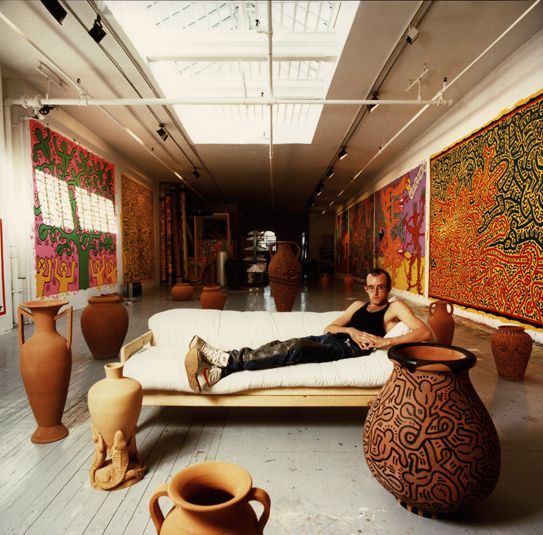
Keith Haring in his studio, 1985
To see available works by Keith Haring or discuss the artist in further detail, please get in touch.
More editorials about Keith Haring
Art Market
The Hang | Your monthly round up of Art Market based News
31 Jul 2025 | 4 min read
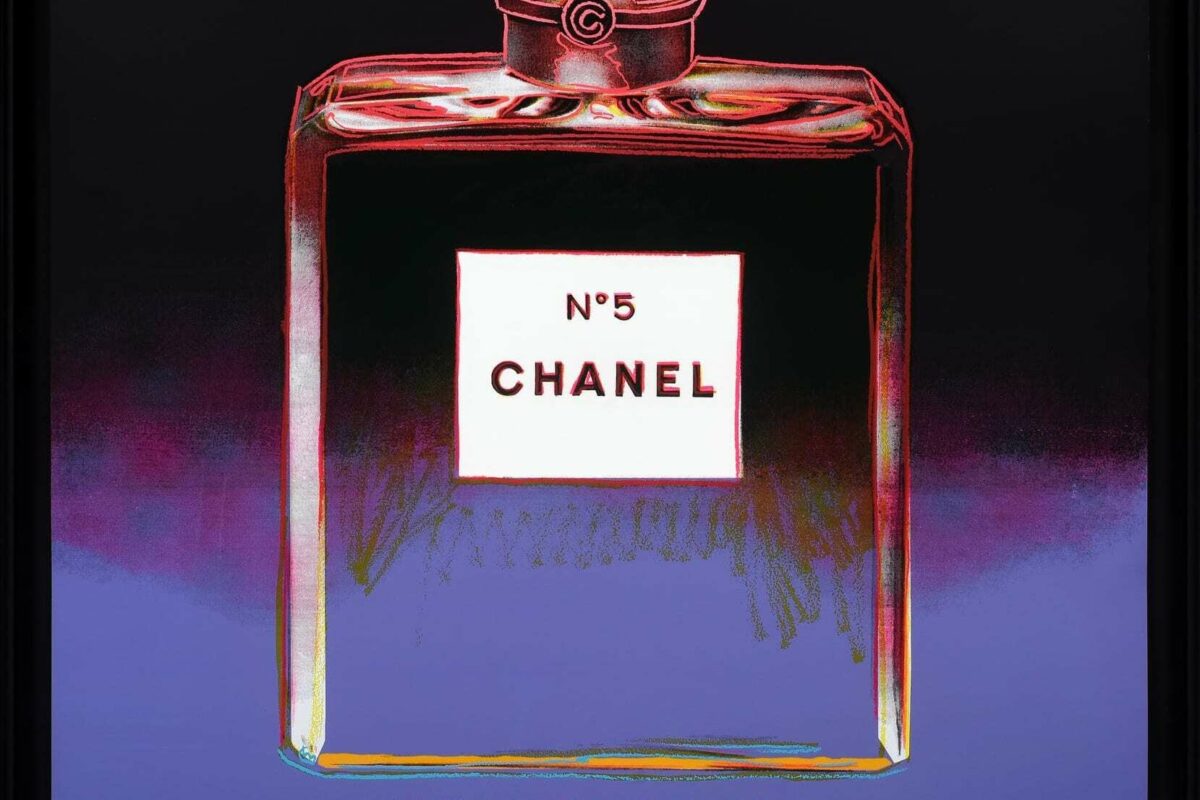
Art Market
Market Watch: Auction highlights | RESULTS Part 2
7 Mar 2025 | 2 min read

Art Market
Market Watch: Auction highlights | RESULTS
3 Mar 2025 | 2 min read

Art Market
Market Watch: Auction highlights | Part 2
1 Mar 2025 | 2 min read

Art Market
Market Watch: Auction highlights | Part 1
24 Feb 2025 | 2 min read

Artists
Hang-Up's Top Exhibitions of 2024
23 Dec 2024 | 5 min read

Art Market
Banksy Triptych Triumphs at Christie's Elton John Auction
28 Feb 2024 | 2 min read
Artists
Happy Birthday Keith Haring
5 May 2022
Artists
It Must Be Love | The Artist and the Muse
8 Feb 2022
More from Artists
Artists
Happy Birthday Andy Warhol, The King of Pop Art
6 Aug 2025
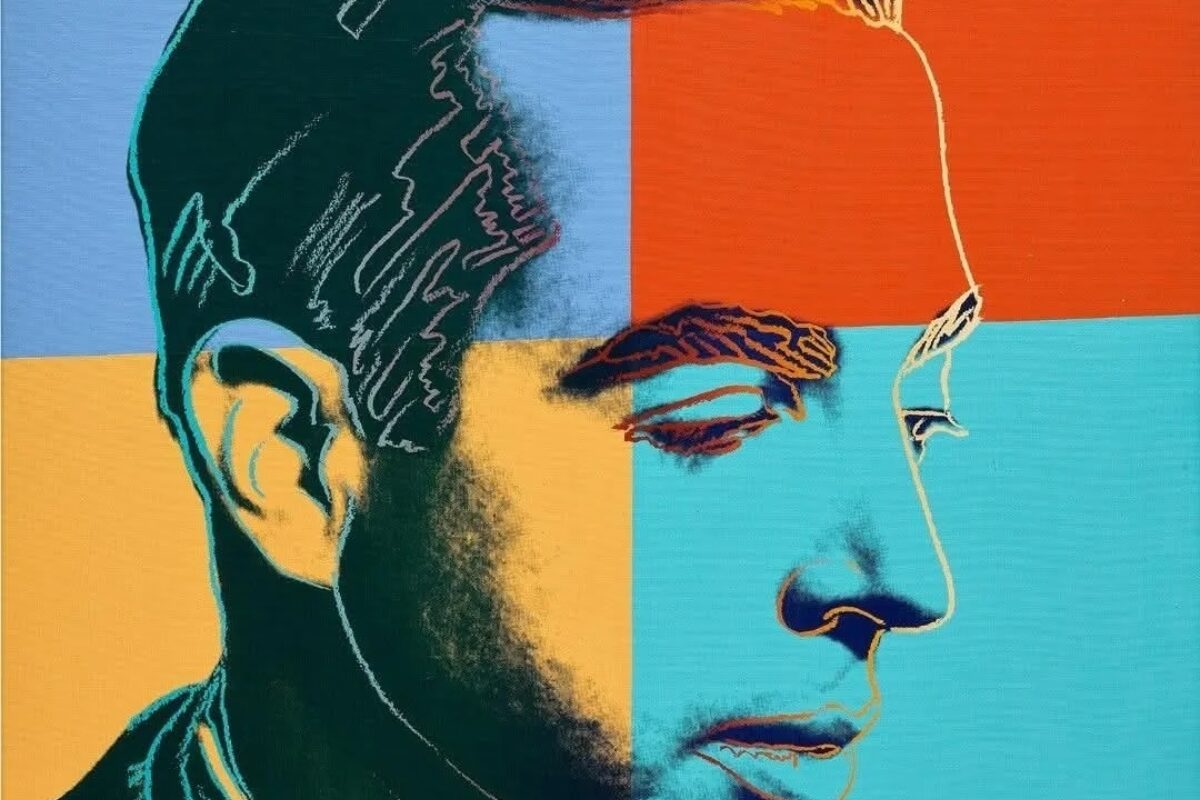
Artists
The Psychology of Kusama
14 Jul 2025 | 3 min read

Artists
From Rothko to Ruscha: Unpacking Harland Miller’s Influences
10 Jul 2025 | 3 min read
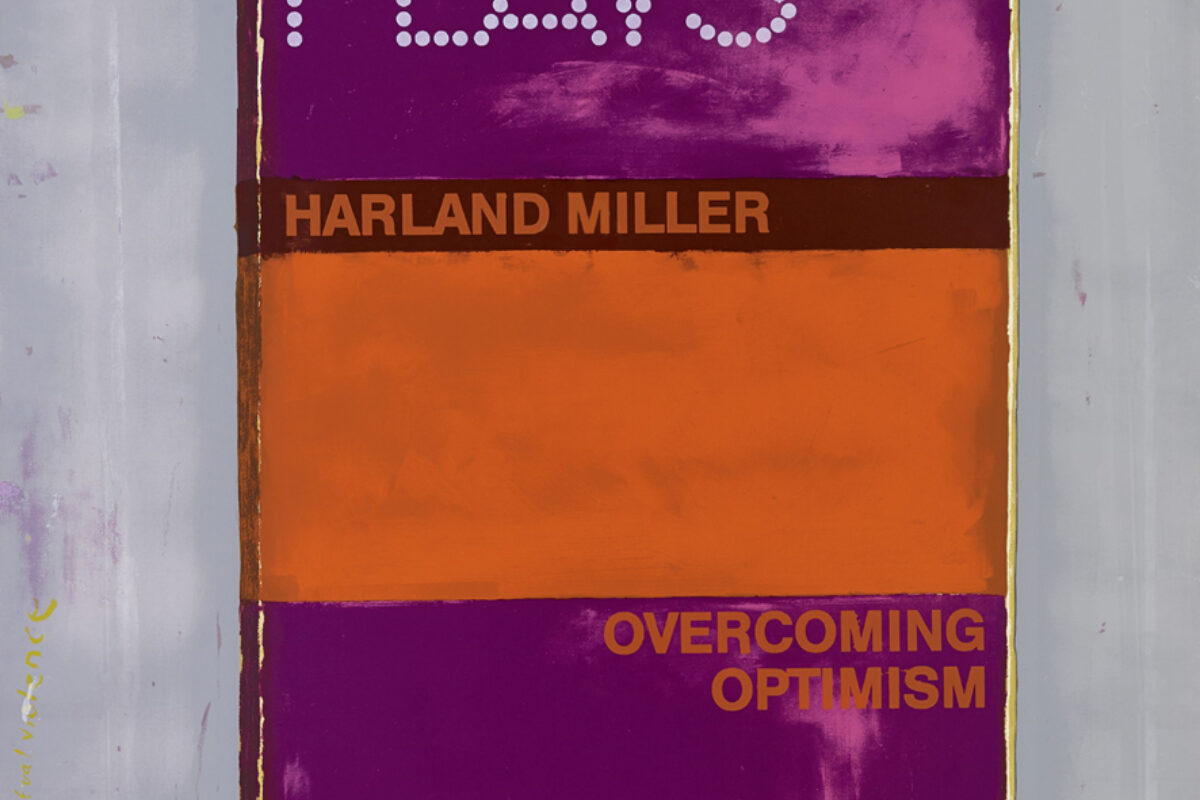
Artists
Decoded: David Shrigley
8 Jul 2025 | 2 min read

Artists
Is David Hockney the Most Important Living Artist?
2 Jul 2025

Artists
Top 10 Selling Warhol Sets
15 Jun 2025 | 2 min read

Artists
David Hockney | 5 Groundbreaking Moments
23 Apr 2025 | 3 min read
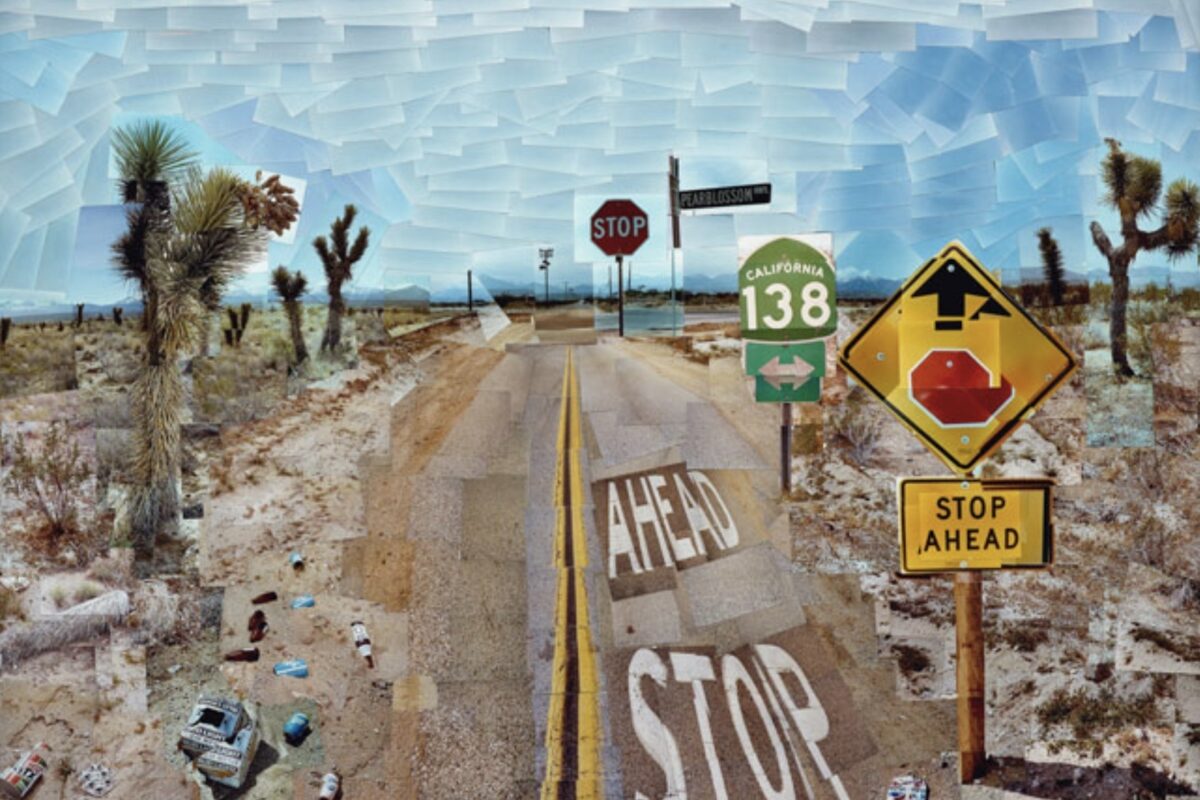
Artists
Yayoi Kusama breaks records with the most successful exhibition in Australian history
17 Apr 2025

Artists
An Interview With Mark Vessey
9 Apr 2025 | 7 min read




